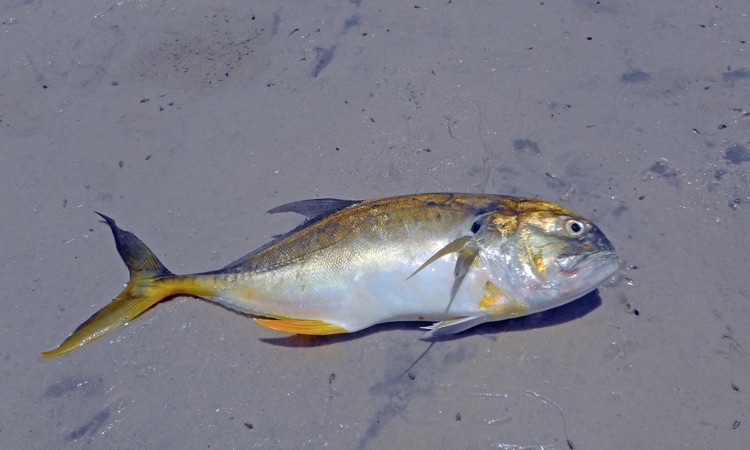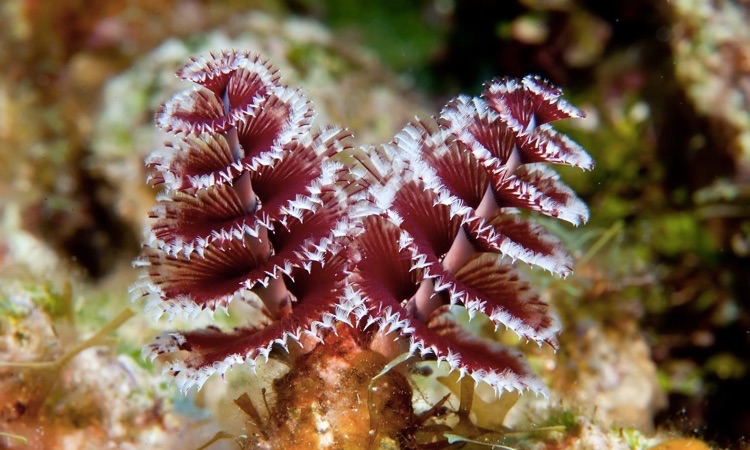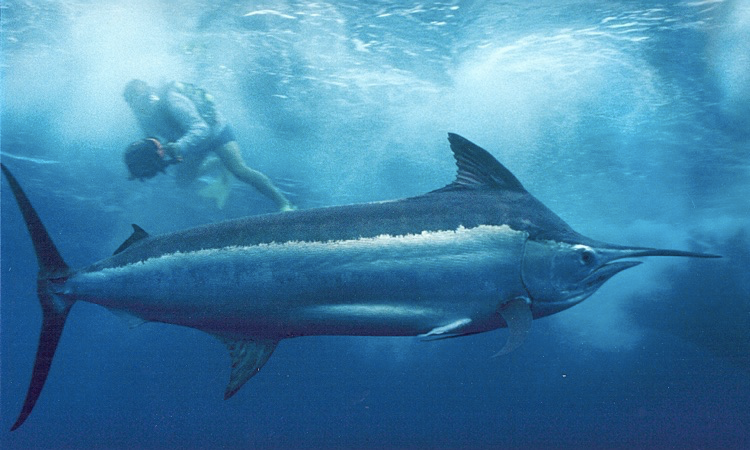Manatees and dugongs are both large, comparably shaped marine mammals. They are often mistaken for one another.
However, if you know the difference, it’s simple to tell them apart. Readers can learn more about how dugong and manatees are similar and different in the sections below.
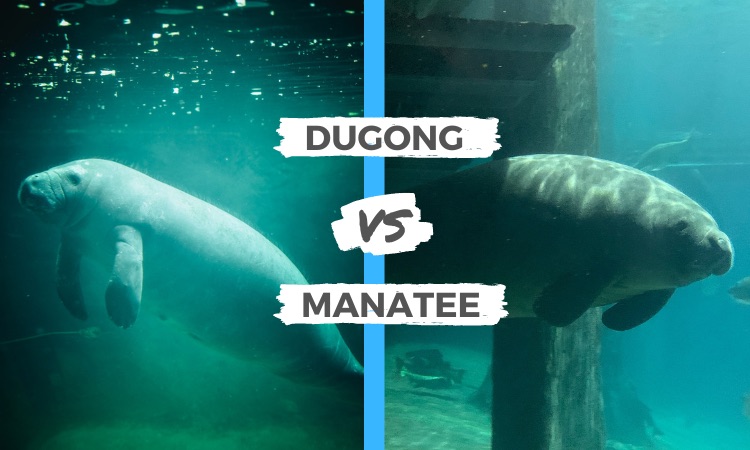
Dugong vs Manatee: Differences
Here are the top five major distinctions between a dugong vs manatee:
- Habitat: Dugongs live in the Indian Ocean and the West Pacific Ocean, as well as Australian waters and mangroves. Manatees prefer seaside and similar regions to dugongs, including Florida, West Africa, the Amazon Basin, and the Gulf of Mexico.
- Size: The average male dugong is around 9 feet long and weighs 200-400 kilograms. Manatees are much larger, growing to 13 feet in length and weighing up to 500 kilograms.
- Appearance: There are no dorsal fins on dugongs or manatees, and they both have snouts that feed on the ocean floor. Although this is the case, manatees have a unique cervical vertebrae of only seven rather than the usual eight.
- Diet: Dugongs feed on seagrass, whilst manatees eat similar plants such as turtle grass, sea clover, marine algae, and shoal grass.
- Movement: Both dugongs and manatees are sluggish swimmers, which has led to them being harmed by boat propellers on many occasions.
The main distinctions between these two types of sea animals are detailed above. Let’s now look at these differences and intriguing facts of the dugong vs manatee.
What is a Dugong?
The dugong is an oceanic cow belonging to the Dugongidae family. It is the only living member of its family, the Dugongidae. It’s a huge creature that lacks a dorsal fin or hind limbs. The manatee is its closest living relative. It has a very small brain to body ratio, like all sea cows.
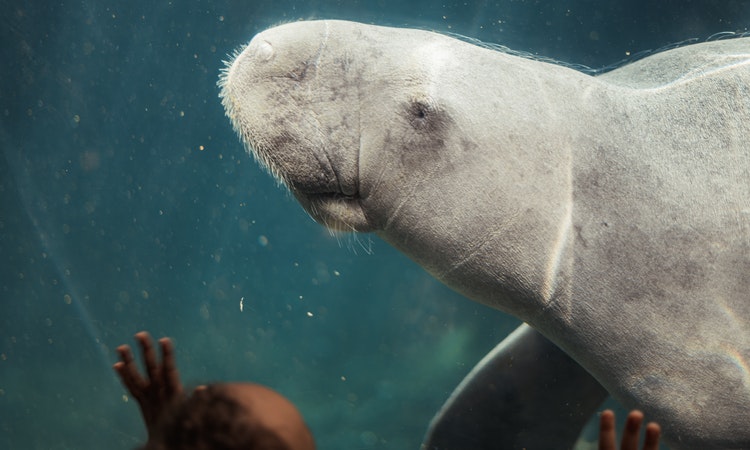
Dugong Appearance
The dugong is a large mammal that may reach up to 9 feet long and weigh around 400 kilograms. The dugong has no dorsal fin or limbs, as previously said. To paddle through the water, it uses its forelimbs, or flippers.
The dugongs are occasionally observed with downturned snouts along the ocean floor, munching on seagrass. If the testosterone level of a dugong male is sufficiently high during the mating season, he will develop tusks to signify his prospects as a possible partner.
Where do Dugongs Live?
Dugongs can be found all around the Indian Ocean and the West Pacific Ocean, where it is warm. Small groups of dugong have been discovered in East Africa. Grassy meadows are typical in their coastal areas, which accounts for most of their life.
They inhabited bays, mangrove channels, and seas that surrounded islands. The territorial waters of Australia play host to the most significant population. Specifically between Shark Bay and Moreton Bay.
What do they Eat?
Dugongs are herbivores that don’t have any special hunting skills. They consume seagrass and are not ferocious hunters. They eat algae as well when there isn’t enough grass. Moreover, on rare occasions dugongs have eaten jellyfish and shellfish.
Reproductive Habits of the Dugong
To reproduce, dugongs employ internal fertilization. Their younger are big and can take a year and a half to nurse. They have a lengthy lifetime span as well as extended inter-reproductive intervals.
These are two of the reasons why species are becoming increasingly rare. As animals are hunted or perish due to changes in their surroundings, it proves difficult to replace a population.
Despite their similar body composition, the female and male dugong have different genitalia. Moreover, female dugongs have differently positioned genitals, whereas dugong males have internally situated organs.
Male dugongs engage in ‘lekking,’ which entails male-on-male combat, as a means of mating. The gestation period for a mate is 13 to 15 months after the selection has been made. As a result, female dugongs can only produce tiny handfuls of eggs throughout their entire existence duration.
What is a Manatee?
Manatees are herbivores that can be referred to as sea cows. There are three species of manatee in the order Sirenia, each with its own distinct subfamily.
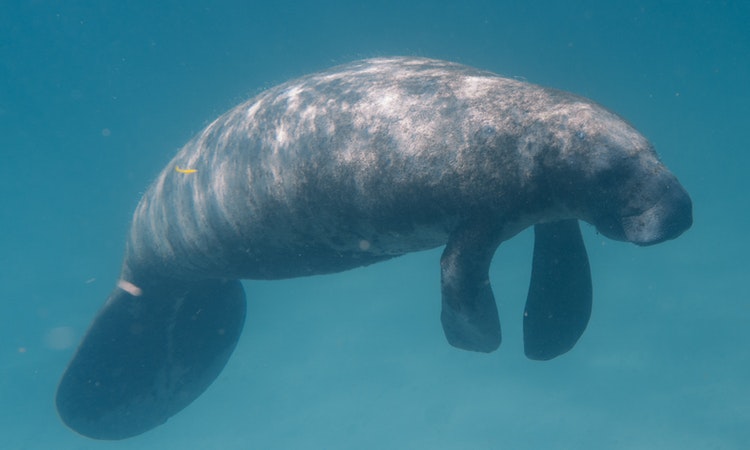
The three species of manatee are:
- West Indian manatee or (Trichechus manatus)
- West African manatee or (Trichechus senegalensis)
- Amazonian manatee or (Trichechus inunguis)
Manatees are also associated with folklore and mythology. They’ve long been associated with mermaid legend in places such as West Africa. In some societies, they have been revered as sacred creatures who were once human. This is comparable to dugongs’ position in countries like Australia.
Appearance of the Manatee
These are large sea creatures, like the dugong. They reach a maximum length of about thirteen feet and weigh up to 1,300kg. Manatees have paddle-shaped flippers similar to those of dugongs.
The manatee’s tail is the most obvious difference in form. The dugong’s tail is fluked like a whale’s, whereas the manatee’s is paddle-shaped. The manatee’s nose is also different from that of the dugongs.
The manatee has a distinct set of cervical vertebrae, which is rather interesting. It only has six instead of the usual seven, whereas all other animals have seven. Except for two species of sloths, that is.
A manatee’s teeth are also a distinctive characteristic. They just have cheek teeth, which are difficult to classify as molars or premolars since they lack incisors and canine teeth.
Where Do Manatees Live?
Manatees are more comfortable in shallow, coastal regions such as the Amazon Basin, the Gulf of Mexico, and West Africa. They are also migratory creatures that live along the coast of Florida in winter and across the marshy areas of the Caribbean throughout the year.
Manatees are separated into three species based on their geographic location. They generally live alone unless a male manatee is seeking to breed, or a young manatee is with its mother.
Reproductive Habits
Manatees weigh around 66 pounds or 30 kg each when they are born. They breed once every two years, and a single calf is produced, much like the dugong. Manatees become sexually mature between the ages of five and six years old.
If a manatee loses its calf, it may take up to two years before it produces another. Female manatees must wait an average of 30 months, 12 months of gestation and 12 to 18 months of weaning before they can have another estrous cycle.
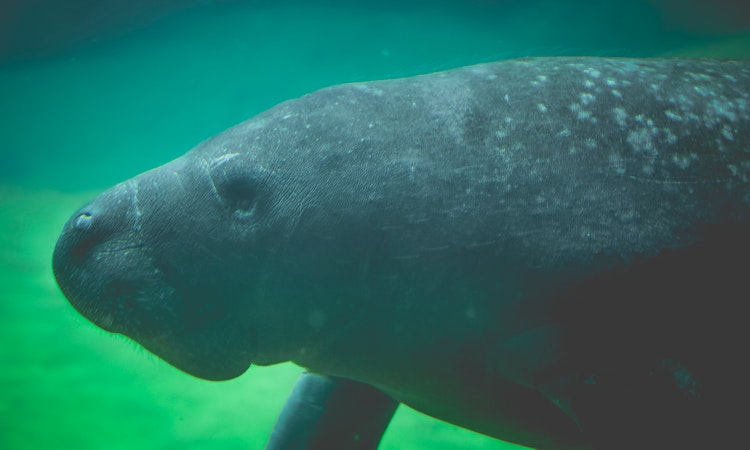
What Do Manatees Eat?
Manatees are herbivores like dugongs. They consume about 60 different types of freshwater and saltwater vegetation. They have been documented eating fish from nuts as well. Turtle grass, sea clover, marine algae, and shoal grass are some of the plants that they enjoy.
Dugong vs Manatee: Threats
The dugong and the manatee are both under threat from human encroachment on critical habitats, pollution, and climate change. Young dugongs and manatees are threatened by predators such as crocodiles.
Manatees and dugongs are sluggish-moving animals. This is due to coastal development and ship collisions, which endanger them. This is one of the major reasons for these enormous creatures’ demise or injury.
Manatees are sometimes wounded by collisions with ships, such as propeller-driven boats and cruise liners. If the initial collision does not kill the manatee, an infection may follow.
The third danger to the manatee’s existence is also boat-related. Many vessels produce low frequencies that interfere with the navigation of manatees. This has been suggested as a cause for the high number of collisions between manatees and ships.
Fishing nets and other objects on or near the water’s surface may endanger these lovely creatures.

